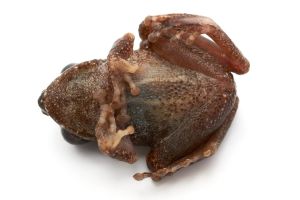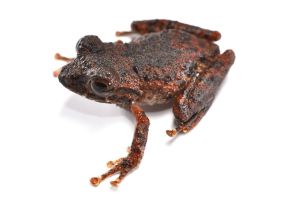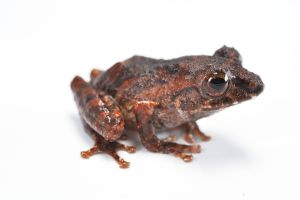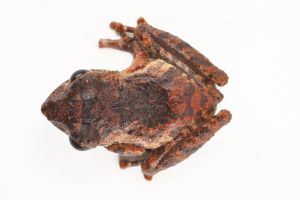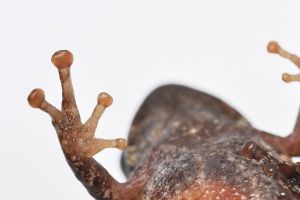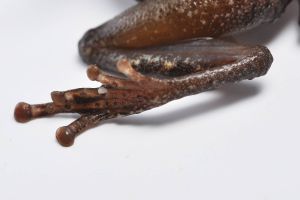
Frogs of Borneo

Frogs of Borneo

Frogs of Borneo

Frogs of Borneo

Frogs of Borneo

Frogs of Borneo

Frogs of Borneo

Frogs of Borneo

Frogs of Borneo

Frogs of Borneo

Frogs of Borneo
Bornean Families
Philautus:
davidlabangi
Matang Bush Frog
Philautus davidlabangi was described by Matsui (2009) from the Matang Range, Sarawak, a lowland habitat. It is likely that the species is more widespread, at least in western Sarawak.
Males reach approximately 21 mm in snout–vent length; data for females are not yet available. The body is stocky, and the snout is slightly pointed both in dorsal view and in profile. A distinct canthus rostralis runs between the eye and nostril, curving gently behind the nostril. The nostrils are positioned on small raised prominences. The pupil is horizontal and elliptical, and the eardrum (tympanum) is visible but somewhat indistinct.
The fingers and toes bear expanded terminal adhesive disks. The free portions of the digits are fringed with fleshy ridges. Webbing is very reduced between the fingers and only moderately developed between the toes. The dorsal skin bears scattered small, round tubercles, with some larger tubercles arranged in a line from behind the eye to the mid-body. Additional tubercles are present on the flanks and eyelids. A distinct supratympanic fold extends from the eye to the arm. The ventral skin is coarsely granular.
The coloration is generally brown with dark markings, including a characteristic X-shaped dorsal pattern. The upper surfaces of the limbs are marked with dark brown crossbars. The ventral side is mottled dark brown with two longitudinal pale lines. The iris is dark brown. As in other Philautus species, there is considerable variation in coloration and pattern among individuals.
This species closely resembles Philautus refugii, with which it may occur in sympatry. P. davidlabangi differs from P. refugii by its slightly larger size, the absence of a barred pattern on the inner thighs, and the presence of nuptial pads. (See additional comments under Philautus refugii.)
The advertisement call consists of a short, single-pulsed note. Calling males usually perch on vegetation at 0.6–3 m height. The reproductive mode is still unknown.
Version tracking
-
09.10.2025
updated
